The aid response to the 2004 Indian Ocean tsunami was unprecedented for a natural disaster, with a colossal $6.25bn donated to a central UN relief fund assisting 14 countries. The series of tsunamis on 26 December 10 years ago killed more than 228,000 people and left more than 2 million people homeless. Indonesia was hardest hit, followed by Sri Lanka and Thailand.
Aid agencies say the response was unlike any they had seen before, particularly in the scale of donations from the public. The Tsunami Evaluation Committee, consisting of UN agencies and other NGOs, described the aid commitments as the most generous and immediately funded (pdf) humanitarian response in history.
In the UK, the Disasters Emergency Committee (DEC) appeal for the tsunami received £392m in public donations, the highest tally from a single appeal since the committee of NGOs formed in 1963. DEC chief executive Saleh Saeed said the appeal was unparalleled, breaking a Guinness World Record for the most amount of money raised online in 24 hours. “We had more than £10m come in to the appeal from the UK public in 24 hours,” he said. “We’d never seen anything like the response we received and it still remains the record appeal; the closest since has been the appeal for the Haiti earthquake, which received £107m.”
Where did the money go?
According to the UN’s financial tracking system, Indonesia received the most humanitarian aid, with more than $1bn allocated to the country. A further $3bn was allocated to the region as a whole, including for early warning systems to reduce the impact of future tsunamis.
The Indonesian province of Aceh, on the northern tip of Sumatra, was the worst-affected region due to its proximity to the earthquake’s epicentre, so it received the most aid. Aceh was also a conflict zone – the province had been the focus of fighting between the Indonesian government and the pro-independence Free Aceh Movement for 29 years. The conflict had displaced thousands of Acehnese families before the tsunami, making some communities harder to reach in the days and weeks after the disaster hit.
Overseas Development Institute research fellow Lilliane Fan, who worked for UN agencies and other NGOs in Aceh, said the aid flowing in to the province created new inequalities. “More than $6bn in aid for the response was incredibly generous and the money was much needed, but the problem is it only went to tsunami areas in a region where many more people were already suffering under poverty and conflict. This created an imbalance that may not have been considered, where some communities received high-standard housing and not far away you had people living with nothing and an economy that was destroyed.”
Notably, the tsunami brought the government and the Free Aceh Movement to the negotiating table, which led to a peace accord in 2005 that gave greater autonomy to Aceh. “The Indonesian government really should be commended in that sense – they used the tsunami to build trust with the Acehnese and to begin a peace process. If you asked the Achenese if any positives came out of the tsunami, they’d point to the peace deal,” Fan said.
Sri Lanka followed Indonesia as the second-largest recipient of aid. It was allocated more than £651m. Like Aceh, it was also affected by conflict, this time between the government and the Tamil Tigers, which made it difficult for aid agencies to enter parts of the country.
Who gave the most?
UN data shows Japan was the single biggest donor to the tsunami response, committing more than $500m and deploying more than 100 emergency workers to assist with relief efforts. Seven years later, Japan experienced its own tsunami, forcing it to swap its position as one of the world’s biggest aid donors to one of the biggest aid recipients of 2011.
Donations from individuals, businesses, trusts and foundations topped the list, accounting for half of total aid to the UN fund and making it the largest private response to any natural disaster.
The European commission’s humanitarian aid and civil protection department contributed more than $154m to the response, as well as sending relief workers, water purification equipment and medical supplies to the hardest-hit regions. The commission also part-funded Unicef’s child protection work in the region, which included registering children who had been separated from their parents during the disaster.
Several countries also provided military support as part of the rapid response, including a US marine mission to Sri Lanka and an Australian contingent including 350 military staff and four helicopters to Indonesia.
How was the money spent?
At the beginning of 2005, the UN launched a separate flash appeal to raise the money it required for the first six months of the response, which was later extended for a further six months. The appeal raised $1.25bn, almost 90% of the target. Of the funding outlined for specific sectors, $229m went to food provision. The World Food Programme led these efforts and delivered 110,000 tonnes of food to the tsunami zone in the first five months of the response, enough to feed more than 2 million people.
More than $187m of the flash appeal funding went to shelter and emergency supplies. The biggest part of DEC funding went to long-term shelter for survivors, with 13,700 homes built in Aceh.
Saeed said shelter was pivotal to people’s recovery but construction failed to move fast enough in some areas. “It takes a long time and is very costly for NGOs or governments to plan and build homes for hundreds of thousands or even millions of people after a major natural disaster. DEC agencies provided high quality houses after the tsunami, but people had to wait too long for a safe home. The lessons of 10 years ago taught us that, in most cases, providing people with training and building materials or cash following a large-scale disaster means that more people can start rebuilding their lives more quickly.”
The importance of cash transfers, where survivors received cash grants to buy what they most need in the months after a disaster, was one of the lessons agencies said they learned from the tsunami. “Humanitarian agencies used to frown at cash assistance, often because of perceived risks with how the money would be spent,” Saeed said. “But one of the lessons that came out of trialling cash [transfers] was just how efficient it was – it enabled people to source what they needed locally instead of receiving supplies they didn’t need or that arrived too late. It’s now been used in other disaster responses, including typhoon Haiyan in the Philippines.”
In a new report (pdf) evaluating the tsunami response, Care International outlined the lessons learned from the disaster and how it had changed future recovery efforts, including greater coordination among sector-specific agencies and new standards for safe housing. Care’s head of emergency operations, Sally Austin, said aid agencies continued to learn from the response. “The tsunami was a turning point for the global aid community. Never before had such a massive, coordinated emergency response been launched after a natural disaster. The way we respond to and prepare for crises was altered forever.”

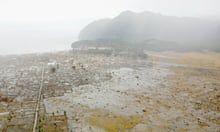
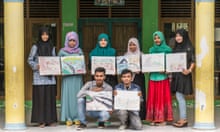
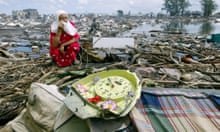

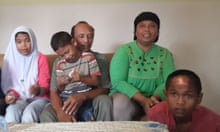
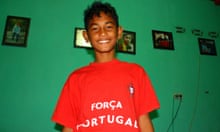
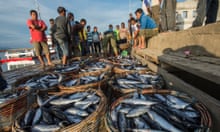
Comments (…)
Sign in or create your Guardian account to join the discussion